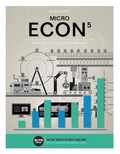
A
the
Concept Introduction:
Economic Decision makers: this refers to the act of determining on the difficulties of the economy and the individuals who make the judgment.
Demand for labor: this is a concept that defines the amount of demand for labor that an economy or firm is willing to employ at a given point of time.
Supply of labor: the number of hours each individual is willing to supply at a given wage rate
Derived demand: this describes the demand of a good or service which is a consequence of the demand for something else.
B
The Supply of labor is determined by whom, their goals and the criteria used by them for achieving that goal.
Concept Introduction:
Economic Decision makers: this refers to the act of determining on the difficulties of the economy and the individuals who make the judgment.
Demand for labor: this is a concept that defines the amount of demand for labor that an economy or firm is willing to employ at a given point of time.
Supply of labor: the number of hours each individual is willing to supply at a given wage rate
Derived demand: this describes the demand of a good or service which is a consequence of the demand for something else.
C
The case when demand for labor is considered as a derived demand.
Concept Introduction:
Economic Decision makers: this refers to the act of determining on the difficulties of the economy and the individuals who make the judgment.
Demand for labor: this is a concept that defines the amount of demand for labor that an economy or firm is willing to employ at a given point of time.
Supply of labor: the number of hours each individual is willing to supply at a given wage rate
Derived demand: this describes the demand of a good or service which is a consequence of the demand for something else.
Trending nowThis is a popular solution!

- Critically analyse the five (5) characteristics of Ubuntu and provide examples of how they apply to the National Health Insurance (NHI) in South Africa.arrow_forwardCritically analyse the five (5) characteristics of Ubuntu and provide examples of how they apply to the National Health Insurance (NHI) in South Africa.arrow_forwardOutline the nine (9) consumer rights as specified in the Consumer Rights Act in South Africa.arrow_forward
- In what ways could you show the attractiveness of Philippines in the form of videos/campaigns to foreign investors? Cite 10 examples.arrow_forwardExplain the following terms and provide an example for each term: • Corruption • Fraud • Briberyarrow_forwardIn what ways could you show the attractiveness of a country in the form of videos/campaigns?arrow_forward

 Principles of Economics 2eEconomicsISBN:9781947172364Author:Steven A. Greenlaw; David ShapiroPublisher:OpenStax
Principles of Economics 2eEconomicsISBN:9781947172364Author:Steven A. Greenlaw; David ShapiroPublisher:OpenStax Principles of MicroeconomicsEconomicsISBN:9781305156050Author:N. Gregory MankiwPublisher:Cengage Learning
Principles of MicroeconomicsEconomicsISBN:9781305156050Author:N. Gregory MankiwPublisher:Cengage Learning Principles of Economics (MindTap Course List)EconomicsISBN:9781305585126Author:N. Gregory MankiwPublisher:Cengage Learning
Principles of Economics (MindTap Course List)EconomicsISBN:9781305585126Author:N. Gregory MankiwPublisher:Cengage Learning Principles of Microeconomics (MindTap Course List)EconomicsISBN:9781305971493Author:N. Gregory MankiwPublisher:Cengage Learning
Principles of Microeconomics (MindTap Course List)EconomicsISBN:9781305971493Author:N. Gregory MankiwPublisher:Cengage Learning Principles of Economics, 7th Edition (MindTap Cou...EconomicsISBN:9781285165875Author:N. Gregory MankiwPublisher:Cengage Learning
Principles of Economics, 7th Edition (MindTap Cou...EconomicsISBN:9781285165875Author:N. Gregory MankiwPublisher:Cengage Learning





